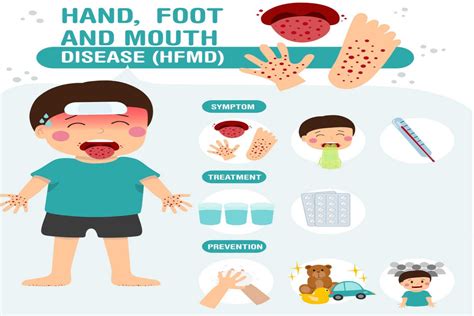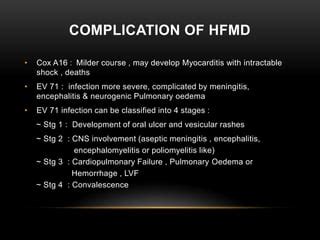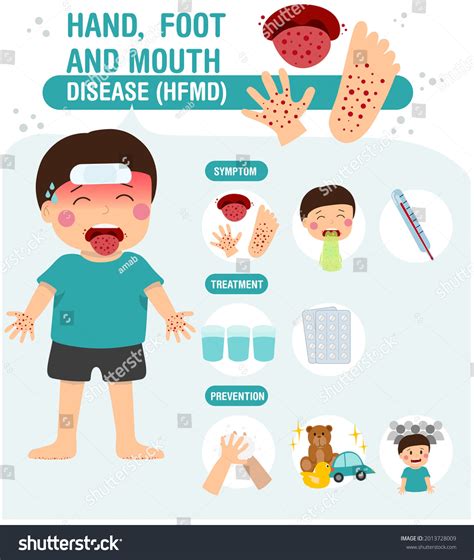Intro
Hand, Foot, and Mouth Disease (HFMD) is a common viral illness that affects people of all ages, but it is most prevalent among children under the age of 10. The disease is characterized by the appearance of sores or blisters on the hands, feet, and inside the mouth, accompanied by fever, sore throat, and general feeling of being unwell. Understanding the causes of HFMD is crucial for preventing and managing the disease.
HFMD is typically caused by viruses from the Picornaviridae family, which includes coxsackieviruses and enteroviruses. These viruses are highly contagious and can be spread through various means, including close contact with an infected person, contaminated food and water, and touching contaminated surfaces. The viruses can also be spread through the air when an infected person coughs or sneezes.
The exact cause of HFMD can vary depending on the specific virus responsible for the outbreak. However, some of the most common causes of HFMD include coxsackievirus A16 (CVA16) and enterovirus 71 (EV71). These viruses are highly infectious and can spread quickly in areas with poor hygiene and sanitation.
What Are The Causes Of HFMD Disease?

The causes of HFMD disease can be attributed to several factors, including poor hygiene, contaminated food and water, and close contact with an infected person. The disease can also be spread through the air when an infected person coughs or sneezes. In addition, people with weakened immune systems, such as those with chronic illnesses or taking immunosuppressive medications, are more susceptible to contracting HFMD.
How Is HFMD Disease Transmitted?
HFMD disease is highly contagious and can be transmitted through various means, including: * Close contact with an infected person, such as touching or shaking hands * Contaminated food and water * Touching contaminated surfaces, such as doorknobs or light switches * Through the air when an infected person coughs or sneezes * Poor hygiene, such as not washing hands regularlyWhat Are The Symptoms Of HFMD Disease?

The symptoms of HFMD disease can vary depending on the severity of the infection, but common symptoms include:
- Sores or blisters on the hands, feet, and inside the mouth
- Fever
- Sore throat
- General feeling of being unwell
- Loss of appetite
- Headache
- Muscle pain
How Is HFMD Disease Diagnosed?
HFMD disease is typically diagnosed based on the presence of characteristic symptoms, such as sores or blisters on the hands, feet, and inside the mouth. A healthcare professional may also perform a physical examination and take a medical history to rule out other possible causes of the symptoms.What Are The Complications Of HFMD Disease?

In rare cases, HFMD disease can lead to complications, such as:
- Dehydration
- Respiratory problems, such as pneumonia
- Neurological problems, such as meningitis or encephalitis
- Septicemia, a life-threatening condition that occurs when bacteria enter the bloodstream
How Can HFMD Disease Be Prevented?
Preventing HFMD disease requires good hygiene practices, such as: * Washing hands regularly with soap and water * Avoiding close contact with people who are infected * Avoiding sharing food, drinks, or utensils with others * Keeping surfaces and objects clean and disinfected * Avoiding touching eyes, nose, and mouthWhat Is The Treatment For HFMD Disease?

There is no specific treatment for HFMD disease, but symptoms can be managed with:
- Over-the-counter pain relievers, such as acetaminophen or ibuprofen
- Antihistamines to relieve itching and discomfort
- Topical creams or ointments to soothe sores or blisters
- Rest and hydration to help the body recover
What Are The Home Remedies For HFMD Disease?
Some home remedies that may help alleviate symptoms of HFMD disease include: * Applying cold compresses to reduce fever and relieve discomfort * Using a humidifier to add moisture to the air and relieve congestion * Drinking plenty of fluids, such as water or clear broth, to stay hydrated * Eating soft, bland foods, such as bananas or plain toast, to reduce discomfort while eatingWhat Are The Frequently Asked Questions About HFMD Disease?

Here are some frequently asked questions about HFMD disease:
What is HFMD disease?
+HFMD disease is a common viral illness that affects people of all ages, but it is most prevalent among children under the age of 10.
How is HFMD disease transmitted?
+HFMD disease is highly contagious and can be transmitted through close contact with an infected person, contaminated food and water, and touching contaminated surfaces.
What are the symptoms of HFMD disease?
+The symptoms of HFMD disease include sores or blisters on the hands, feet, and inside the mouth, fever, sore throat, and general feeling of being unwell.
In conclusion, HFMD disease is a common viral illness that can be prevented and managed with good hygiene practices and prompt medical attention. By understanding the causes, symptoms, and treatment options for HFMD disease, individuals can take steps to protect themselves and their loved ones from this highly contagious illness. If you suspect that you or your child has HFMD disease, it is essential to consult with a healthcare professional for proper diagnosis and treatment. We encourage you to share this article with others to raise awareness about HFMD disease and its prevention. Additionally, we invite you to comment below with any questions or concerns you may have, and we will do our best to provide you with helpful and informative responses.
